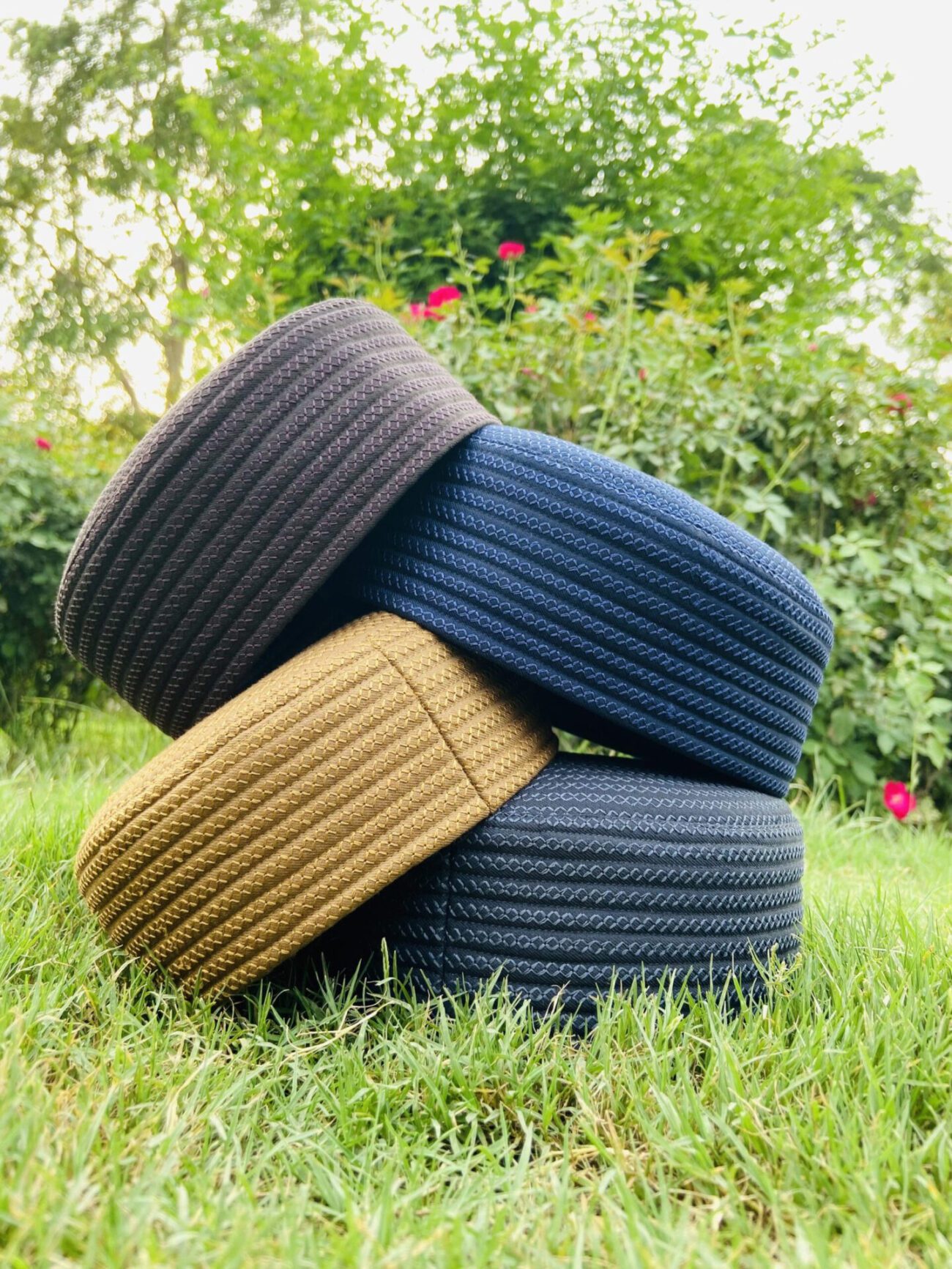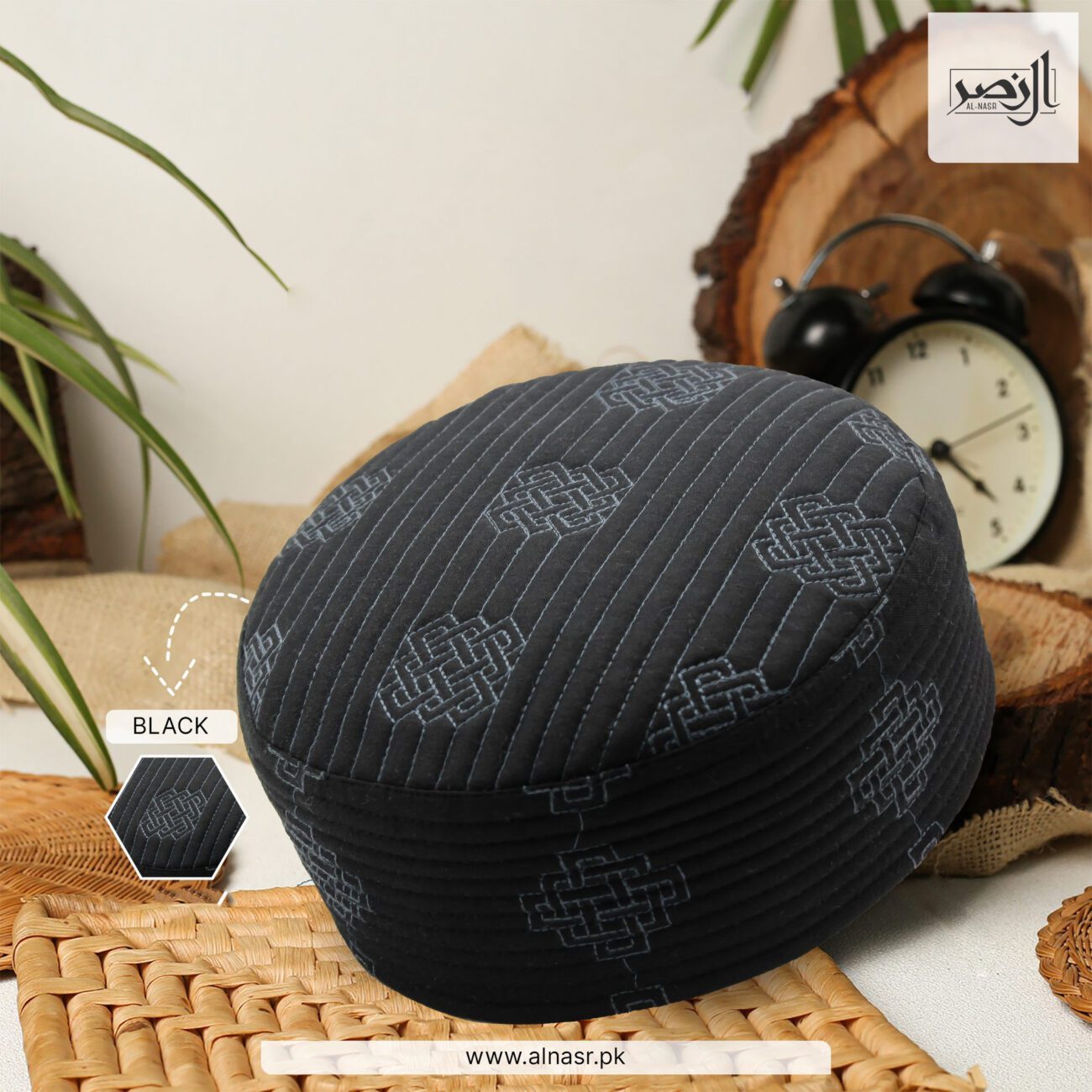Step into the world of fashion and culture as we embark on a journey to unravel the captivating history and cultural significance of the Kufi cap. This iconic headwear has adorned the heads of individuals across various cultures and regions for centuries, leaving an indelible mark on fashion and identity. From its origins in Africa to its influence on the global stage, the Kufi cap has become a symbol of tradition, spirituality, and style. Join us as we delve into the rich tapestry of stories and traditions that surround this timeless accessory. Discover how the Kufi cap has evolved over time, adapting to different cultures and incorporating unique design elements. Immerse yourself in the vibrant world of the Kufi cap, where history and fashion intertwine, and uncover the secrets behind its enduring allure. Are you ready to explore the fascinating world of the Kufi cap? Let’s dive in!
The Historical Significance of the Kufi Cap in Islamic Culture
The Kufi cap holds deep historical significance in Islamic culture, dating back to the early days of Islam. Named after the city of Kufa in present-day Iraq, the Kufi cap was initially worn by the prophet Muhammad and his companions. It became a symbol of piety and humility, representing the wearer’s devotion to their faith. The Kufi cap is often associated with prayer and is commonly worn during religious ceremonies and important gatherings.
Throughout history, the Kufi cap has been an essential part of Islamic dress, reflecting the diversity and unity of Muslim communities around the world. It has been worn by scholars, religious leaders, and ordinary individuals, serving as a visual representation of their commitment to Islam. The Kufi cap’s simple yet elegant design embodies the principles of modesty and simplicity that are central to Islamic teachings.
Over time, the Kufi cap has evolved to encompass various styles and materials, reflecting the cultural and regional diversity within the Muslim world. From intricately embroidered caps adorned with beads and sequins to plain, knitted caps, each design tells a unique story and carries its own symbolism. The Kufi cap continues to be an important cultural symbol, representing the rich heritage and traditions of Islamic communities across the globe.
The Symbolism and Cultural Importance of the Kufi Cap
Beyond its religious significance, the Kufi cap holds a deep cultural importance in many societies. It symbolizes identity, heritage, and belonging, evoking a sense of pride and cultural connection. In African cultures, the Kufi cap is often worn as a representation of African heritage and resistance against colonialism. It has become a powerful symbol of cultural resilience and a way to reclaim African identity and traditions.
The Kufi cap’s symbolism extends beyond religion and culture. It has been embraced by various social and political movements as a symbol of resistance, empowerment, and solidarity. In the civil rights movement in the United States, the Kufi cap was worn by activists as a statement of pride and defiance against racial inequality. It became a visual representation of the African diaspora’s struggle for justice and equality.
In addition to its cultural symbolism, the Kufi cap is also valued for its practicality and comfort. Its close-fitting design provides protection from the sun and acts as an insulator in colder climates. The Kufi cap’s versatility allows it to be worn as a fashion accessory, adding a touch of elegance and sophistication to any outfit. Whether worn for religious, cultural, or fashion purposes, the Kufi cap carries a deep sense of meaning and significance.
Evolution of the Kufi Cap: From Traditional to Modern Styles
The Kufi cap has undergone various transformations over the centuries, adapting to the changing fashion trends and cultural influences. In its early days, the Kufi cap was predominantly made from natural materials such as wool, cotton, or silk. It featured a simple design, typically in a solid color, and was often embellished with intricate embroidery.
As time went on, the Kufi cap incorporated new design elements and materials, reflecting the evolving tastes and preferences of different cultures. In West Africa, for example, Kufi caps made from brightly colored fabrics and adorned with intricate patterns became popular. These caps, known as “Ghanaian Kufis,” are often worn as a symbol of cultural pride during traditional ceremonies and celebrations.
In recent years, the Kufi cap has gained popularity in mainstream fashion, transcending its traditional roots. Designers and fashion brands have incorporated the Kufi cap into their collections, bringing it to the global stage. The cap is now available in a wide range of styles, colors, and materials, catering to diverse fashion preferences.
Famous Figures and Icons Associated with the Kufi Cap
Throughout history, many famous figures and icons have embraced the Kufi cap, further elevating its status and cultural significance. One such figure is Malcolm X, a prominent civil rights activist and Muslim leader. Malcolm X was known for his iconic style, which often included a black Kufi cap. His choice to wear the Kufi cap was not only a reflection of his religious beliefs but also a symbol of his commitment to fighting for justice and equality.
Another influential figure associated with the Kufi cap is the late musician and activist Fela Kuti. Fela Kuti, often referred to as the “father of Afrobeat,” was known for his distinctive style, which included wearing a large, colorful Kufi cap. His bold fashion choices became synonymous with his music and political activism, making him an icon in both the music and fashion worlds.
These are just a few examples of the many individuals who have embraced the Kufi cap and used it as a means of self-expression and cultural identity. Their influence has contributed to the Kufi cap’s enduring popularity and its recognition as a symbol of empowerment and cultural pride.
Regional Variations of the Kufi Cap: Exploring Different Designs
The Kufi cap’s design varies across different regions, reflecting the diverse cultural influences and traditions within the Muslim world. In North Africa, for instance, the Fez cap, also known as the Tarboosh, is a popular variation of the Kufi cap. The Fez cap is typically made from felt and features a distinctive shape with a flat top and tassel. It has become synonymous with Moroccan and Algerian culture, often worn during special occasions and religious ceremonies.
In the Middle East, the Agal, a black cord worn around the Kufi cap, is a common addition to the traditional design. The Agal is traditionally used to secure the Kufi cap in place and is often associated with Bedouin culture. It adds a touch of elegance and sophistication to the overall look.
In Southeast Asia, the Kufi cap takes on a different form, known as the Songkok or Kopiah. The Songkok is typically made from velvet or other soft materials and is commonly worn by Muslim men in countries such as Malaysia and Indonesia. It is often worn during religious occasions and formal events, adding a traditional touch to the attire.
These regional variations highlight the diverse cultural traditions and styles associated with the Kufi cap. Each design carries its own unique history and symbolism, making the Kufi cap a truly global accessory.
Contemporary Popularity and Fashion Trends of the Kufi Cap
In recent years, the Kufi cap has gained significant popularity in mainstream fashion and is embraced by individuals from various backgrounds. Its versatility and cultural significance have made it a sought-after accessory for those seeking to make a fashion statement or express their cultural identity.
Fashion designers and brands have recognized the appeal of the Kufi cap and have incorporated it into their collections. The cap can now be found in a range of styles, including modern interpretations that combine traditional elements with contemporary design aesthetics. From streetwear to high fashion, the Kufi cap has become a staple accessory, worn by celebrities, influencers, and fashion enthusiasts alike.
In addition to its growing popularity in fashion, the Kufi cap has also become a symbol of unity and inclusivity. It is often worn as a statement of solidarity, showcasing support for marginalized communities and promoting cultural diversity. By embracing the Kufi cap, individuals are not only celebrating its aesthetic appeal but also affirming their commitment to cultural appreciation and understanding.
How to Wear and Style the Kufi Cap: Tips and Ideas
The Kufi cap offers endless possibilities for styling and accessorizing. Whether you’re looking to make a bold fashion statement or add a subtle touch of elegance to your outfit, the Kufi cap can be worn in various ways to suit your personal style.
For a classic and sophisticated look, pair a solid-colored Kufi cap with a tailored suit or traditional attire. Opt for neutral colors such as black, brown, or navy blue for a timeless appeal. This combination exudes elegance and showcases a refined sense of style.
If you’re looking to add a pop of color to your outfit, choose a Kufi cap with vibrant patterns or embroidery. Pair it with a monochrome or neutral-colored ensemble to let the cap take center stage. This combination creates a striking contrast and adds a touch of personality to your look.
For a casual and contemporary look, consider wearing a knitted Kufi cap with a stylish jacket, jeans, and sneakers. This combination effortlessly blends comfort and style, making it perfect for everyday wear or weekend outings.
When it comes to accessorizing the Kufi cap, consider complementing it with accessories such as sunglasses, watches, or bracelets. These additional elements add depth and character to your overall look, creating a cohesive and well-styled ensemble.
The Kufi Cap in the Global Fashion Industry: Influences and Inspirations
The influence of the Kufi cap extends beyond its cultural and historical roots and has made its mark in the global fashion industry. Designers and fashion brands have drawn inspiration from the Kufi cap, incorporating its elements into their collections and runway shows.
The Kufi cap’s simple yet versatile design has served as a muse for designers seeking to create unique and stylish headwear. Its clean lines and minimalist aesthetic have inspired modern interpretations, with designers experimenting with different materials, shapes, and embellishments.
In addition to inspiring fashion designers, the Kufi cap has also influenced popular culture and entertainment. It has been featured in movies, music videos, and television shows, further cementing its status as a cultural icon. From hip-hop artists to movie stars, the Kufi cap has become synonymous with style, individuality, and cultural pride.
Conclusion: Celebrating the Timeless Appeal of the Kufi Cap
The Kufi cap’s fascinating history and cultural significance have allowed it to transcend time and borders, making it a truly iconic accessory. From its origins in Islamic culture to its influence in the global fashion industry, the Kufi cap represents tradition, spirituality, and style. Its symbolism and regional variations showcase the rich diversity within Muslim communities and beyond.
As we explore the vibrant world of the Kufi cap, we uncover stories of resilience, pride, and cultural heritage. Whether worn for religious, cultural, or fashion purposes, the Kufi cap holds a deep sense of meaning and significance to those who wear it. It serves as a reminder of the power of fashion to bridge cultural divides and celebrate diverse identities.
So, the next time you see someone wearing a Kufi cap, take a moment to appreciate the rich history and cultural significance it represents. Embrace the timeless appeal of this iconic headwear and celebrate the stories and traditions it carries. The Kufi cap is more than just a fashion accessory; it is a symbol of unity, diversity, and the enduring power of culture.



Pingback: The Kufi - A Traditional Hat with Modern Appeal - The Muslim Clothes